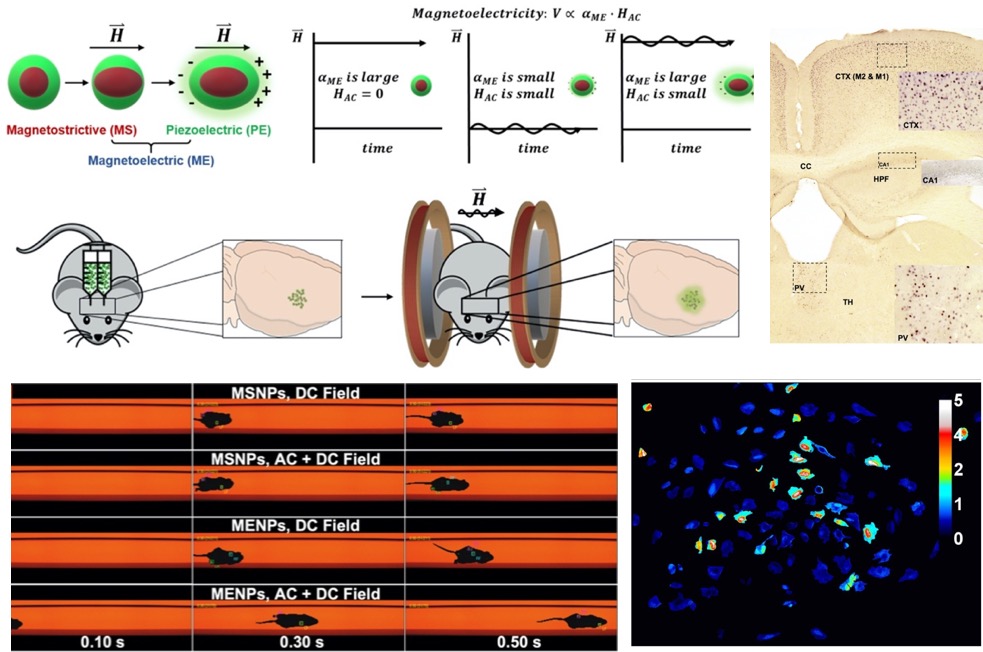
Electrical communication with and modulation of the central nervous system is essential to our current understanding of neurobiology and the diagnosis and treatment of neurological disorders. Efforts to make neural intervention mainly focus on developing less invasive, longer-lasting, and safer neural devices. A key challenge of such devices is powering, and wired-in powering can require that patients undergo surgical battery changes every 3 to 5 years in deep brain stimulation devices. Instead, neural devices that are remotely powered have emerged using magnetic induction, optoelectronic signaling, acoustic powering of piezoelectric materials, magnetic heating, and magnetoelectric materials. With certain degrees of success, each approach is limited by various anatomical or inherent phenomenological restrictions.
To achieve wireless neural stimulation, we have explored the potential of magnetoelectric nanoparticles (MENPs) [ ]. We have shown proof-of-concept evidence that the non-resonant magnetic powering of MENPs locally modulates neuronal activity both in vitro and in a mouse model. We have also demonstrated that this modulation is sufficient to change animal behavior and to modulate other regions of the corticobasal ganglia-thalamocortical circuit. We will also explore wireless robotic neurostimulation methods, which could also enable stimulation at desired diverse locations by active position control.
